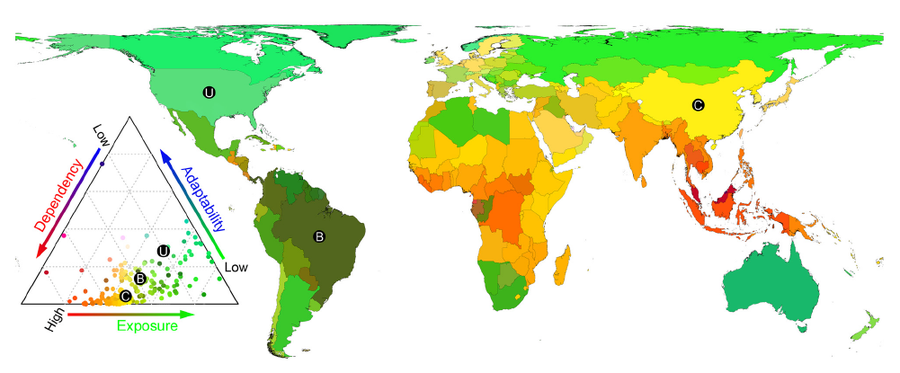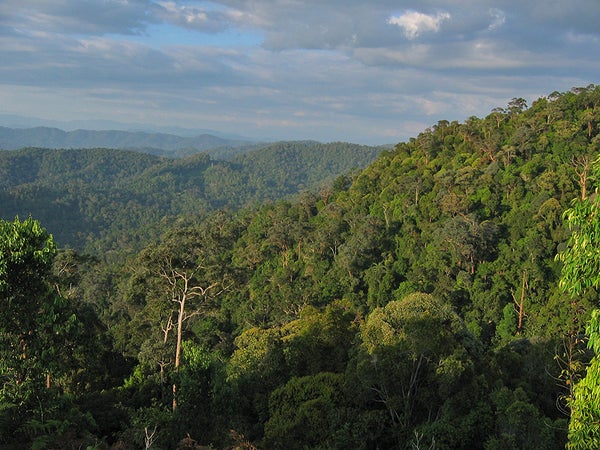In all the bad news about climate change, one bright spot was the forecast that rising temperatures would help plants grow worldwide, especially in the cold, high latitudes. But a new study rips that idea out by the roots. “There is more to climate change than just temperature,” says Camilo Mora, an assistant professor of geography at the University of Hawaii in Mānoa, who led the work. Drought and limited sunlight will undermine any gain from a warmer atmosphere. By 2100, Mora says, “there could be an 11 percent reduction in the plant growing season worldwide.”
One primary reason is that heating the Arctic will not bring pineapples to Alaska. There is insufficient sunlight year-round at high latitudes to support lush vegetation. In addition, the tropics will lose up to 200 “suitable growing days” a year—days when temperature, soil moisture and sunlight favor growth rather than retard it—because of excessive heat and drought. Overall, “the decreasing number of suitable growing days in the tropics will offset optimistic projections at mid- and high-latitudes,” the study concludes. It was published on June 9 in PloS Biology.
Mora did not expect this result when he began the study, inspired by notes he swapped with a climate denier. In 2013 Mora published a high-profile study in Nature showing that climate change would harm plants and animals in the tropics sooner than it would hurt them in the Arctic. He says he received numerous e-mails and phone calls attacking the results. “In one such phone call I decided to talk to the person,” he explains. “The guy, one of the so-called climate deniers, claimed that climate change would actually be good for the planet.” The argument is known as the greening effect—that warmer temperatures and higher CO2 levels in the atmosphere would increase plant growth. Mora found several serious papers reaching that conclusion. (Scientific American is part of Nature Publishing Group.)
On supporting science journalism
If you're enjoying this article, consider supporting our award-winning journalism by subscribing. By purchasing a subscription you are helping to ensure the future of impactful stories about the discoveries and ideas shaping our world today.
But Mora, who grew up in Colombia and saw plants struggle under high heat and low rainfall, had a hunch that there was more to the story. He and his graduate students calculated the number of days, from now through 2100, when plants would have favorable temperature, moisture and light to grow. They found that at high latitudes plants in the future could not “profit” from warmth because sunlight is limited much of the year. In the tropics temperatures got too hot for numerous plants and drought rose, adding stress to already overtaxed ecosystems. Broadleaf forests there would take the biggest hit, losing as much as three months of suitable growing days annually.

People in tropical regions will struggle the most with future changes in plant growth. Areas in dark green are least vulnerable. Light green regions are somewhat vulnerable, yellows are very vulnerable and reds are highly vulnerable.
Greater levels of CO2 made no difference one way or the other. At higher temperatures plants open their pores, called stomata, to capture the elevated CO2, which boosts photosynthesis, greening the leaves. But plants also tend to close their stomata in warmer temperatures to prevent water loss. Mora says that on balance the two effects cancel out.
Long-term, a global drop in growth means plants would suck up less atmospheric CO2, thereby allowing the greenhouse effect to worsen.
Undermining growth across low latitudes is worrisome because the region is home to 2.1 billion people, many of whom depend heavily on local plant life for food and income. For communities in places such as Central America and Oceania, Mora says, “the land will fail to meet basic demands.” And in Africa’s Sahel, if subsistence farmers lose half their growing days, they will be unable to feed their families and might be forced to move; armed conflicts could arise as a result. Mora says bioengineering will be needed to try to make crops resistant to the coming changes.
Certain countries in moderately high latitudes will benefit, however—primarily Russia, China and Canada. “That tells you the political leverage that climate change could give to some countries if they gain the power to feed the rest of the world,” Mora says. He adds that it might be wise to make friends with more Canadians.
The numbers noted above come from the “business as usual” scenario in climate models—what will happen if greenhouse gas emissions continue to rise at rates seen in recent decades. Serious efforts among nations to cut emissions could lessen the toll on plants. When Mora ran the data through scenarios for strong and even moderate mitigation of CO2 emissions, the drop in suitable growing days diminished significantly. This “underscores the importance of reducing emissions,” the study concludes.
Mora sees two big lessons from the new analysis. One, “that nothing good can come from messing with the Earth’s climate.” And two, “that engaging climate deniers could be good for scientific productivity.”
